Oppo F11 Pro review
Introduction
Once a showcase of Oppo's selfie-centric tech, now the F-series has evolved into a fully-fledged mid-range lineup. And the new Oppo F11 Pro has a lot to show off starting with a notch-less edge-to-edge screen and a 48MP main camera, as well as a pop-up selfie camera and VOOC charging.
The F11 Pro, which is currently aimed at the Indian market, is an instant eye-catcher. It's not about selfies anymore. The F11 has a large 6.53" display free of any cutouts thanks to the pop-up selfie snapper. The front snapper can still impress, though, as it has a 16MP sensor capable of many tricks thanks to some advanced AI algorithms.
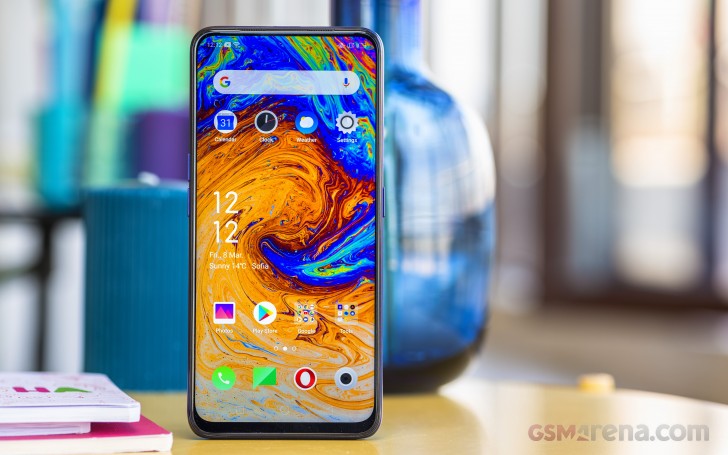
The hottest trend of the season - the 48MP main camera - is on the Oppo F11 Pro as well. It comes with a Quad-Bayer color filter, which means the pixels combine to produce impressive 12MP photos. The main camera has a 5MP helper for more accurate portraits, too.

The Helio P70, which is turning to be a popular choice lately, is at the heart of the Oppo F11 Pro and if our experience with the chipset is anything to go by, we should see some solid performance and excellent battery life. The latter will be aided by the phone's impressive 4,000mAh battery with 20W VOOC fast charging.
Oppo F11 Pro specs
- Body: Glass front, refined plastic back and sides, 190g
- Screen: 6.53" LTPS TFT 1,080 x 2,340 px resolution; 397 ppi.
- Chipset: MediaTek Helio P70 (12nm) chipset: octa-core CPU (2x2.1 GHz Cortex-A73 & 4x2.0 GHz Cortex-A53); Mali-G72 MP3 @900MHz GPU.
- Memory: 4/6GB RAM, 64/128GB built-in storage, microSD slot support.
- OS: Color OS 6.0 on Android 9.0 Pie.
- Rear camera: 48MP f/1.8, 0.8µm, 1/2", PDAF support, Quad-Bayer filter + 5MP depth sensor, LED flash; 1080p@30fps with EIS.
- Front camera: Pop-up 16MP f/2.0, HDR, 1080p video
- Battery: 4,000mAh, VOOC 3.0 20W (5V/4A).
- Connectivity: Dual-SIM; LTE Cat.7 download/ Cat.13 upload, Wi-Fi a/b/g/n/ac, GPS; Bluetooth 5.0 A2DP, LE, EDR, FM radio; microUSB 2.0.
- Misc: Rear-mounted fingerprint reader, motorized pop-up selfie camera.
The Oppo F11 Pro will impress with looks first and foremost - it has a double-gradient back, and it sure looks impressive. It could be enough to forgive the dated microUSB port and the lack of 4K video recording, but the jury is still out on that.
Unboxing the Oppo F11 Pro
The Oppo F11 Pro isn't exactly a budget smartphone, and you can tell by its well rounded retail bundle. The F11 box contains a 20W VOOC charger, the proprietary microUSB cable needed for the VOOC to work, and even a pair of EarPods-like headphones.

And that's not all. Each F11 arrives with a pre-applied screen protector and comes with a pop-up-cam-friendly plastic case inside the box.
Design and build
The gradient paint job has made its way to the mid-range and even budget smartphones, so it's all but a surprise to see it on the Oppo F11 Pro. Oppo has an excellent track record for making stunning gradients of all kinds since the F7 and R15 models.
The F11 Pro has either triple-color or dual-color gradient depending on which model you opt for - Thunder Black of Aurora Green. We got the Black one, and it's as captivating as the official images suggested. But first things first.
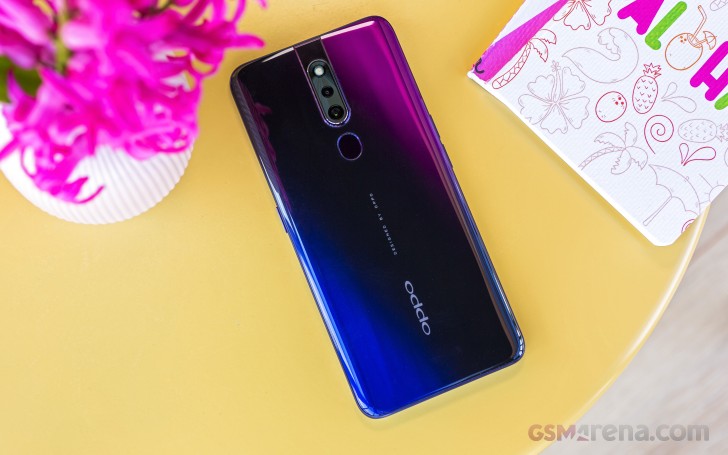
The Oppo F11 Pro's key feature is that large 6.53" display free of any cutouts and with the bare minimum of bezels. While the regular F11 has a waterdrop-like notch, the Pro model is all about the full-screen experience, and that's why Oppo has moved the selfie camera onto a motorized pop-up.
A pop-up selfie camera is an already familiar concept as seen in the portfolio of another of BBK's companies - Vivo to be specific. And it just makes sense to see this contraption spread among other BBK-owned companies, too.
 Vivo V15 Pro and Oppo F11 Pro
Vivo V15 Pro and Oppo F11 Pro
So, the selfie snapper is now on a motorized pop-up module and it works like the ones we've seen on a couple of Vivo phones. If Face Unlock is enabled, it will pop up every time you wake up the screen. We haven't fired this accidentally in a pocket, but Oppo promises the module is resilient enough to sustain plenty of manual pushes.
This might be a bummer for the die-hard selfie fans as it will take a second before the camera goes up and kicks off. And of course, whatever Oppo promises, an appendix like that is easy to break especially when crowds and tight spaces are involved. We guess it's either full-screen experience with Oppo F11 Pro or uninterrupted selfie photography with the regular Oppo F11.
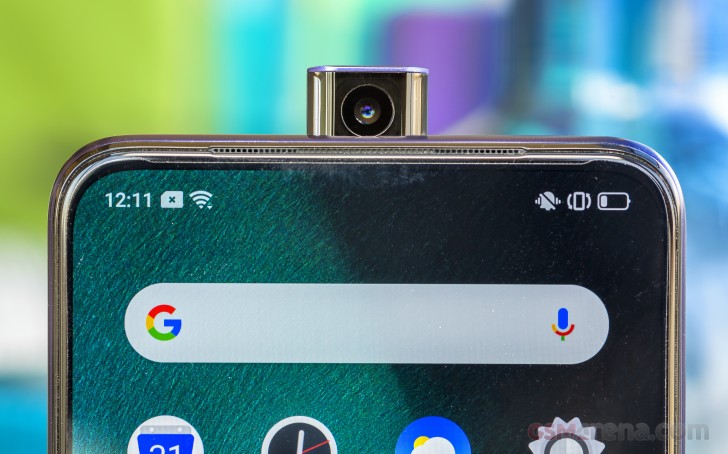
The screen is not truly bezel-less, none on the market is. This allows the makers to fit the earpiece on the top bezel, no matter how thin it is. And the one on the F11 Pro is super thin and long. Oppo says there are two receivers in there for clearer and sharper sound. Indeed, it does sound pretty well in calls.
Just don't mistake the earpiece for a speaker. The Oppo F11 Pro has just one loudspeaker, and it's at the bottom.
The top part of the frame has a noise-canceling mic and the ambient light sensor. There are two proximity sensors on the Oppo F11 Pro, but we can't really tell where - probably behind the screen.
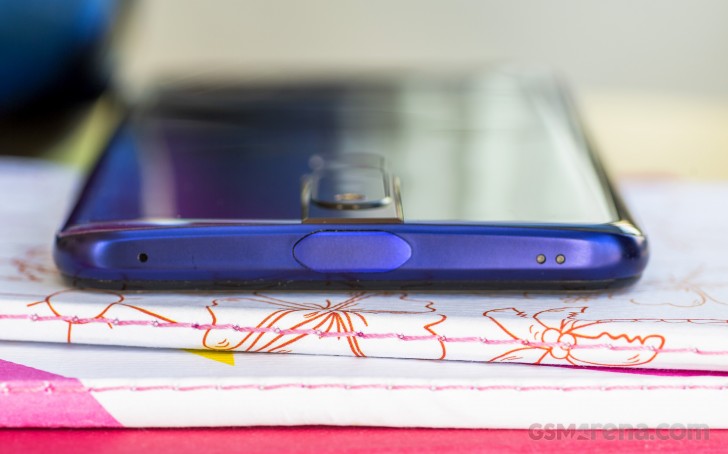
The rising camera is also here, and it transitions very cool towards the back when it's extended. Oppo has put a metal ring around the main camera setup on the back, which ends nicely on the selfie camera and when it's up, the back seems less interrupted.
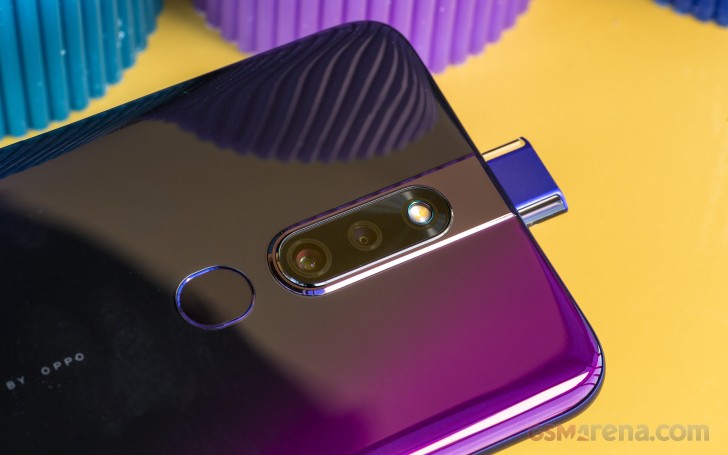
This prettiness is responsible for a double-hump though. First - the metal piece is bulging above the rear panel, and then the dual-camera setup and its LED flash are protruding even more. It's not as bad as it sounds though and if you are not that picky for, you may grow to like this unorthodox accent - at least it's symmetric.
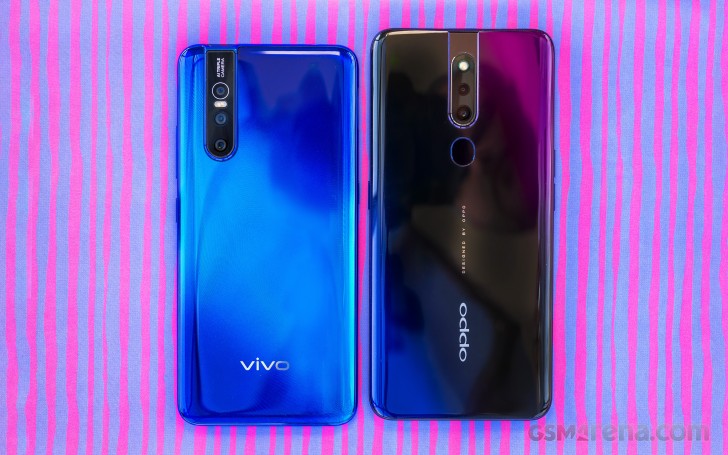 Vivo V15 Pro and Oppo F11 Pro
Vivo V15 Pro and Oppo F11 Pro
The 48MP camera sensor is your main camera that will usually save 12MP photos, while there is also a 5MP snapper acting as a depth sensor. A single LED flash completes the camera tools on the back.
The Oppo F11 Pro has an always-on fingerprint sensor on the back, so if you want a more secure unlock, we'd advise to use it instead of the face unlock.
The whole back, as well as the frame, are made of nice-looking plastic, which looks like a glass and feels like a glass.
But plastic or glass, the Thunder Black rear panel is nothing short of stunning. The triple-color gradient is an instant eye-catcher, and it changes under different light conditions. And every time we grab the phone - it feels like we are seeing it for the first time.
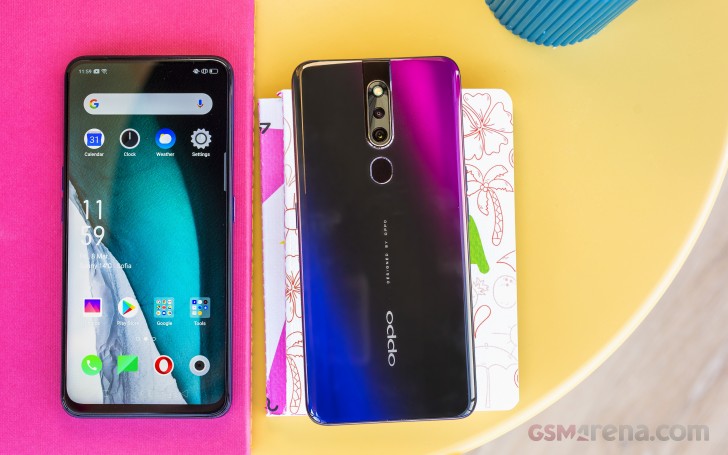
Handling the F11 Pro feels like a premium experience. As we mentioned, the back is indistinguishable from glass and looks as dazzling as they make them. The glossy finish allows fingerprints to stick, but that's expected.
But thanks to the matte frame, we didn't consider the F11 Pro to be as slippery as some other phone we've handled recently. Slippery, yes, but not to extremes.
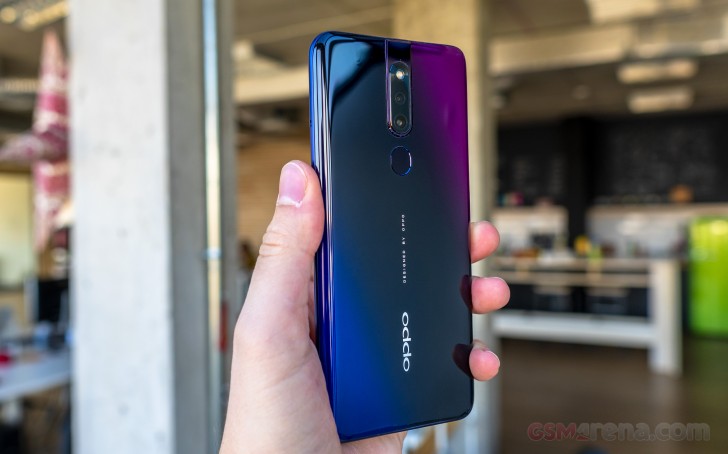
The Oppo F11 Pro measures 161.3 x 76.1 x 8.8 mm, which is 5mm taller than the F9 Pro and 2mm wider. It weighs 190 g - that's 20g up from the F9.
The Oppo F11 Pro uses a dated microUSB port at the bottom, but VOOC charging is available. It also has a 3.5mm audio port, and a hybrid dual-SIM slot meaning you can use a microSD card instead of a second SIM.



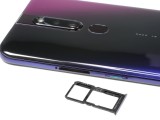
Comments
Post a Comment